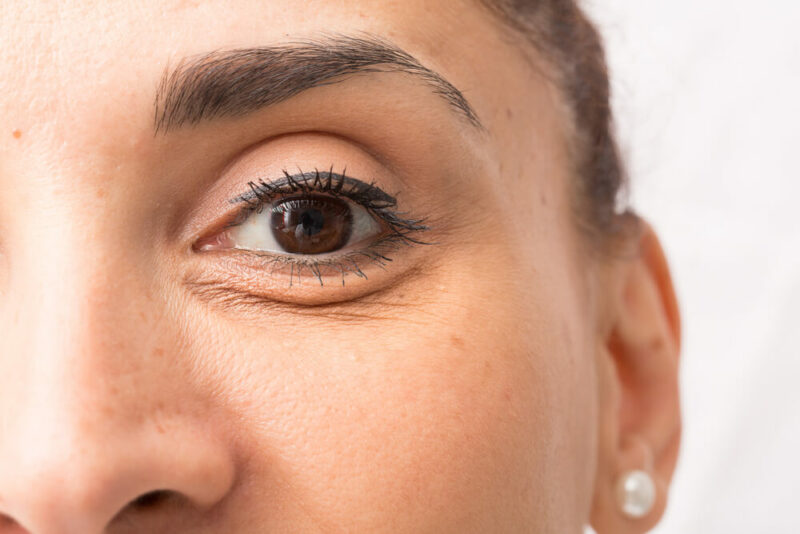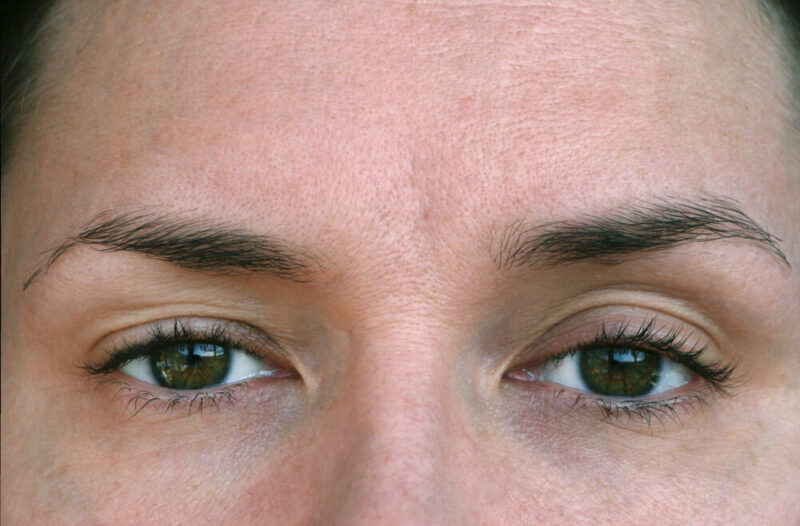Eyelid Center
Eyelid Treatment Options
Having issues with drooping eyelids or a nagging eyelid twitch? Schedule an evaluation with one of the Board-Certified surgeons at Montgomery Eye to discuss your options. We offer blepharoplasty, BOTOX® Cosmetic, therapeutic BOTOX®, as well as ptosis repair. Our experts will assist you in making the decision that is right for you.
Blepharoplasty (Eyelid Treatment) Testimonials
Blepharoplasty — Functional | Cosmetic | Ptosis Repair

As we age, the skin on the eyelid stretches and the muscles supporting the lids begin to weaken. Excess fat starts to collect around the eyes causing ”bags” droopy lids, and on occasion, visual impairment.
Often referred to as eyelid lift or eyelid surgery, functional and cosmetic blepharoplasty (BLEF-uh-ro-plas-te) procedures are performed by removing excess skin, fat, and/or muscle from the eyelids. While the results for both appear similar, the reasons for having functional vs. cosmetic blepharoplasty are distinctly different.
The primary goal for functional blepharoplasty is to provide improved vision and comfort. Occasionally, patients undergo functional blepharoplasty because the excess skin of the upper lid causes the lashes to rub and irritate the outer surface of the eye. The irritation can lead to infection and/or scarring and should be treated before permanent damage occurs. The primary goal for cosmetic blepharoplasty is to improve the overall look of the lid – giving a more rested appearance.
Relatively safe and proven procedures, blepharoplasty and ptosis (TOE-sis) repair are most often performed in an outpatient surgical setting. Recovery is quick and the scars, which are placed in the crease of the lid(s), begin to fade approximately in approximately 6 months.
It is important that you discuss all risks, benefits, and alternatives with your surgeon to determine if surgery is an option for you.
BOTOX® Therapy for Blepharospasm
How BOTOX® Works
To treat blepharospasm, BOTOX® therapy helps block signals from the nerves that tell the muscles that control the affected areas to contract. This helps reduce eye muscle spasms.1Patients often begin seeing an improvement in symptoms within the first 3 days, with maximum results about 1 to 2 weeks after injection.1
Montgomery Eye offers BOTOX® therapy treatments at our Zelda and Sturbridge offices. If you are having uncontrolled eyelid spasms, please call 334-271-3804 to schedule an appointment with Dr. Tom Lyle Mitchell or Dr. In C. Shin. Our skilled physicians will work with you to determine the best solution.
References
1. BOTOX (onabotulinumtoxinA) Prescribing Information. Updated January 2016.

Ptosis Repair

If the margin of the eyelid droops close to your pupil, blepharoplasty can be done in conjunction with another procedure called ptosis (TOE-sis) repair. Ptosis is the medical term for drooping of the upper eyelid, a condition that may affect one or both eyes.
Droopy eyelids (ptosis) occur when the edge of the upper eyelid that contains the lashes covers part of the pupil, subsequently blocking the upper visual area. In severe cases, it is necessary for these patients to tilt their head backward or lift the eyelid with a finger in order to see from under the drooping lid.
In most cases, a drooping upper eyelid results from the aging of previously normal structures. The tendon that attaches the muscle to the eyelid loses elasticity and the eyelid falls too low. Since the muscle that lifts the eyelid has normal strength, surgical correction of a drooping upper eyelid that was once normal involves repairing the stretched tendon.
Relatively safe and proven procedures, blepharoplasty and ptosis repair are most often performed in an outpatient surgical setting using oral sedation and local anesthesia. Recovery is quick and the scars, which are placed in the crease of the lid(s), begin to fade approximately in approximately 6 months.
It is important that you discuss all risks, benefits, and alternatives with your surgeon to determine if surgery is an option for you.
